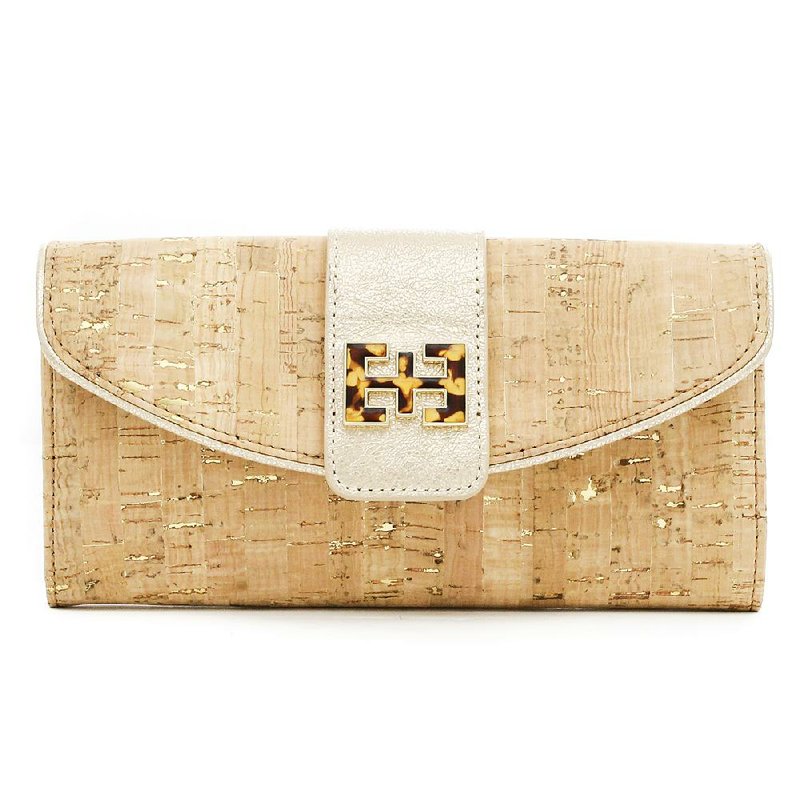NEW YORK -- Cork. It's not just for wine stoppers and bulletin boards anymore.
Embraced by some progressive furniture makers decades ago and a staple in housewares, cork has found a larger place among shoes, handbags, jewelry and other fashion accessories.
Designer Elaine Turner is a proponent of cork, which is renewable, feather light and water-resistant. So is Ingrid Heinkel, who imports cork accessories ranging from men's wallets to a woman's backpack in a tiger stripe design.
Cork is popping up in umbrellas, simple apparel items like shawls, watchbands, bracelets, necklaces, hats, belts, golf bags and shoes, shoes, shoes -- moccasins, flip-flops and Superga sneakers with neon flecks, Jimmy Choo wedges and Badgley Mischka stilettos.
And we're not just talking soles and shock absorbent foot beds. We're talking uppers in double straps and gold tips from Turner and vibrant color combinations in slides, though cork is often left in its raw, recognizable state.
"I think we're in a very natural vibe right now, and a very green vibe. Cork works with that. It's just something unique. This season it has really hit its high point," says Alison Minton, who blogs about accessories at Accessorygeneration.
While Minton sees cork as a seasonal item for spring and summer, Heinkel goes so far as to declare: "Cork is the new leather." Far-fetched? She calls cork in accessories an emerging market.
"I think that it's on its way to becoming something permanent in the marketplace," Heinkel says. "I used to live in Spain, and I found the handbags on a weekend in Portugal, and I'm having a lot of fun with it. I used to go to the trade shows and I would have to kind of bang the drums to get people's attention and explain, but now it has its own momentum."
Spas and the shops of wineries and museums are big customers for Heinkel, but her most popular item online at Cork Design is a hobo handbag in a natural blond grain.
Turner, fond of natural materials that also include raffia palm fibers, started using cork about seven years ago to further her tropical vacation aesthetic.
"We started making bags and shoes out of it and it instantly was popular. It's probably our No. 1 material for spring every year," she says. "It's neutral and very versatile."
Turner uses a manufacturer in Spain, a part of the Mediterranean where most of the cork supply comes from.
"It's very malleable so it translates easily on handbags and shoes. And it's highly durable. There are no issues with fraying or pulling apart like the raffia. People love it for travel," Turner says. "It's also cost-effective."
Daniella Ohad, a home design historian, estimates that 60 percent of all cork production is for the wine industry, though the World Wildlife Fund has warned that plastic alternatives to cork wine stoppers may threaten cork oak forests of Portugal, Spain, Algeria, Morocco, Italy, Tunisia and France.
Cork is the thick outer bark of mature trees and fully regenerates over cycles of about 10 years, until quality falls off after seven cycles or so. Cork extraction is one of the most environmentally friendly harvesting methods, and cork production provides a sustainable livelihood for people in many parts of the world, according to the wildlife fund. Portugal is the biggest producer and the primary source of diversification of cork into accessories.
While cork may be having a fashion moment, it has lost momentum elsewhere.
Ohad, who teaches at the New York School of Interior Design, said cork remains on the outskirts of forward-looking furniture after it appeared to be resurfacing a few years ago.
"You really don't see cork being utilized in very sophisticated design in furniture," she says.
"In the '20s and '30s, architects discovered cork and it was the perfect material for modernism because it was clean and it was very different. It had a very special surface to it and texture to it," Ohad adds, noting another spurt as a material in 1950s home design.
Some have likened the feel of cork to suede in fashion accessories. Patterns can be built using dark and light shades. In shoes, Minton says, the cork moment began in the wedge part of wedges, but now designers "have decided to go full-on cork."
"It's not heavy on the foot. It's great for the beach. It looks good if you're walking in the city," she says. And it transitions well, when dolled up with metal fittings and other touches, from day to evening.
The Houston-based Turner, who just opened her seventh store and the first in New York about six months ago, is considering expanding her cork offerings into jewelry.
"Cork is really cross-generational," she says. "It's all about how you interpret it. It's a revenue builder for me."
Style on 07/29/2014
